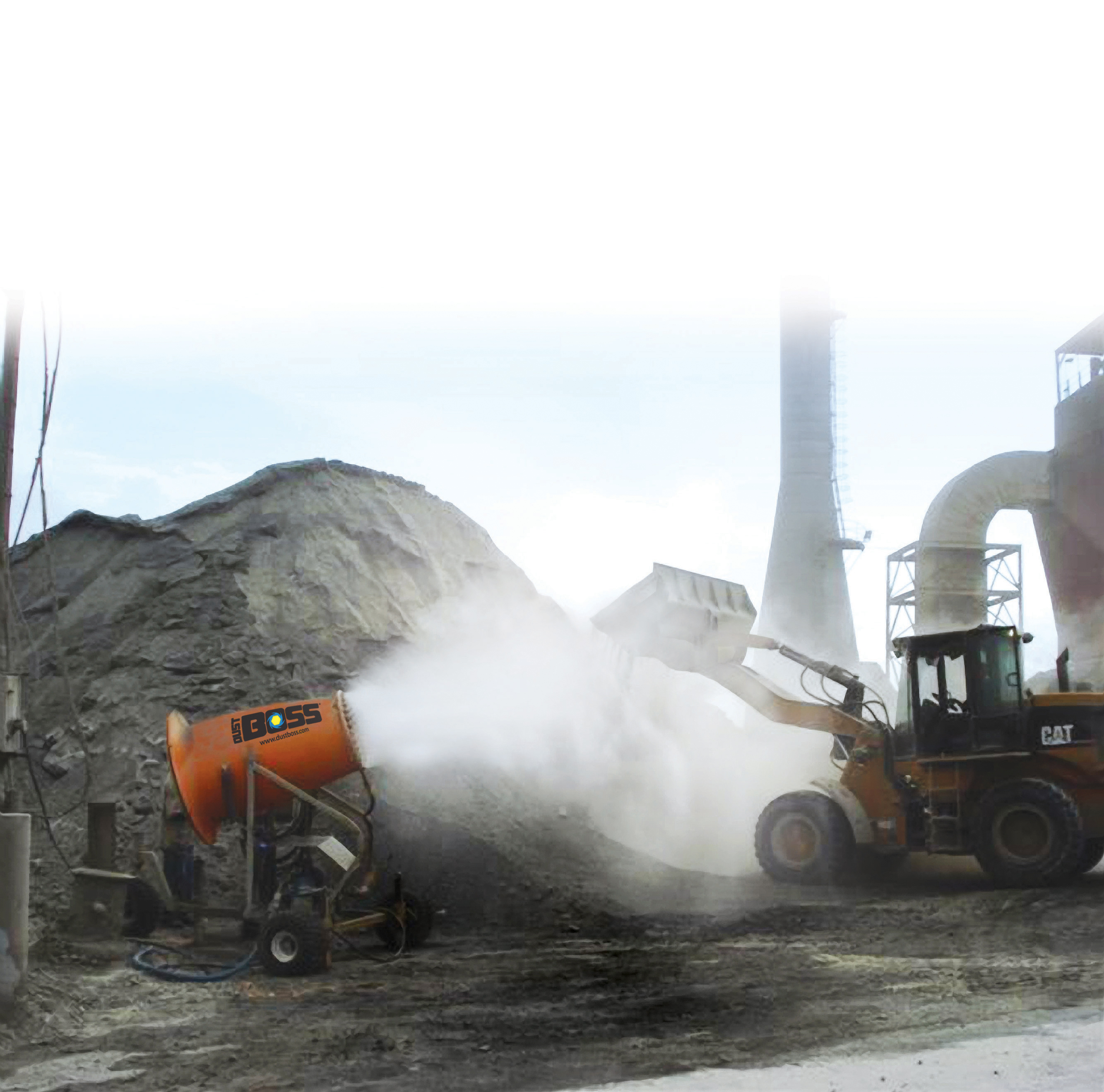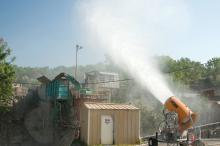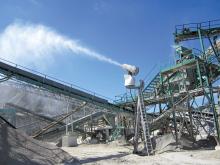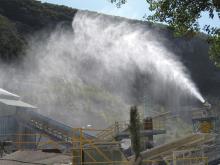
Reducing airborne dust has helped one quarry in Trinidad to improve the environment of its workers and relations with its neighbours
Dealing with nuisance dust is an issue for almost every quarry and for those operating in the tropical paradise of the Caribbean, it is no different. One Trinidad-based quarry operator has recently tackled the problem and is seeing benefits for its workers, neighbours and its machine service life too.
"In the past, our crews had done their best to control dust particles by hand spraying, but we found that watering with hoses or sprinklers offered limited benefit in containing surface dust," said TCL health, safety and environmental manager Amarchandra Maharaj. "And once the dust particles became airborne, the water droplets from these methods were far too large to have a meaningful effect." According to Maharaj, manual techniques also had a tendency to saturate the material surface and contributed to standing water. Even with dust screens and vegetation to help create a containment barrier, company officials believed there had to be a way to better suppress airborne particles and contain surface dust, without the saturation problems and manpower requirements that typically accompany hand spraying.
A study of the site showed that one of the main problem was the
The company wanted a solution that could be moved with the crusher and trialled a
The DB-60 uses a series of 30 specially-designed brass nozzles to atomise water droplets to the optimum size for maximum particle attraction and coverage area, then launches them with a powerful 25HP fan. DustBoss offers a wide range of nozzles for different applications, which allows the optimum spray pattern and droplet size to suit the specific type of dust at each site.
According to DCT, the unit's suppression efficiency derives from its ability to balance a number of critical properties that tend to work against one another, such as droplet size, spray pattern, air flow, range and velocity. "If spray nozzles create large droplets, they can be thrown a longer distance than small ones, giving a unit more range," explained DCT CEO Edwin Peterson. "Unfortunately, large drops have a lower capture rate and more space in between, making them less efficient overall.
"The optimum condition is when the water droplets are approximately the same size as airborne particulates, producing the greatest attraction between the two. Given the average dust particle sizes involved in most quarrying and crushing operations, testing and experience have shown that droplets 50-200microns in size typically deliver the highest efficiency in most situations.
"Similarly, a high velocity air flow allows an atomized spray to be thrown farther, so a powerful fan delivers an advantage. But the higher the velocity, the smaller the drops tend to become. Even though small drops produce good capture and surface wetting, there is a point at which suppression efficiency falls off in the attempt to reach greater air speed and distance. Maximum particle control is the result of considering all the goals and tradeoffs, ultimately producing a design that balances each component in relation to the others."
The system used at TCL's quarry delivers 850m3 of airflow through the barrel to give a throw of more than 60m and also had the option for a pump booster to increase the water pressure, if needed. The DB-60 also has an adjustable elevation from 0-50 , and the oscillating head delivers 400 of motion. The rotating design can cover 0.2ha from a single location and the wheeled carriage-mounted mobile unit can be easily relocated.
According to TCL, the system is working well and has helped to improve the working environment of its operative and minimise dust pollution problems for nearby residents. But the system is also having other operational advantages - it is helping to reduce the opportunity for abrasive dust to enter air intakes on heavy equipment, helping to extend air filter life and reduce unnecessary engine wear.








